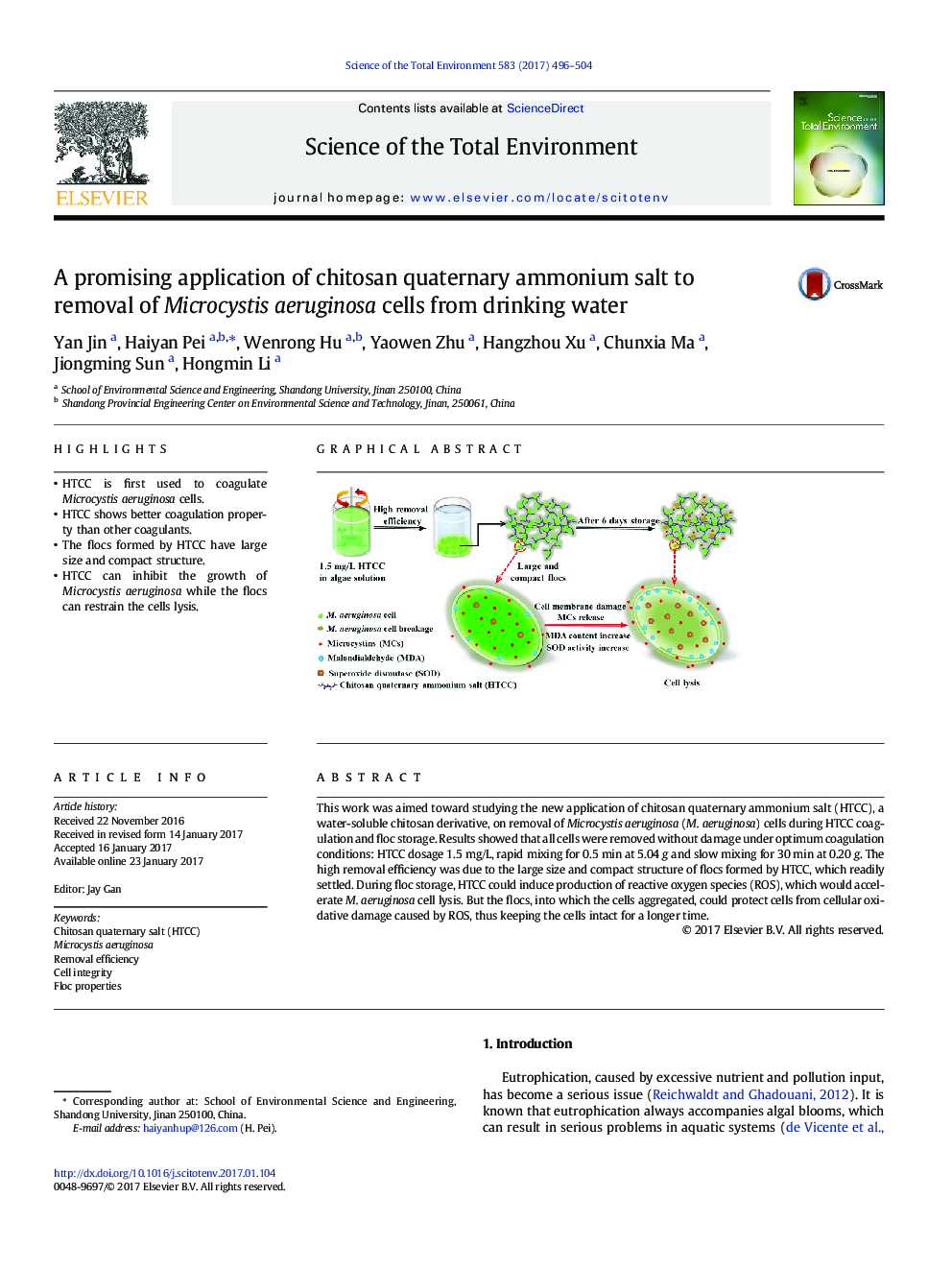| Article ID | Journal | Published Year | Pages | File Type |
|---|---|---|---|---|
| 5751251 | Science of The Total Environment | 2017 | 9 Pages |
â¢HTCC is first used to coagulate Microcystis aeruginosa cells.â¢HTCC shows better coagulation property than other coagulants.â¢The flocs formed by HTCC have large size and compact structure.â¢HTCC can inhibit the growth of Microcystis aeruginosa while the flocs can restrain the cells lysis.
This work was aimed toward studying the new application of chitosan quaternary ammonium salt (HTCC), a water-soluble chitosan derivative, on removal of Microcystis aeruginosa (M. aeruginosa) cells during HTCC coagulation and floc storage. Results showed that all cells were removed without damage under optimum coagulation conditions: HTCC dosage 1.5Â mg/L, rapid mixing for 0.5Â min at 5.04Â g and slow mixing for 30Â min at 0.20Â g. The high removal efficiency was due to the large size and compact structure of flocs formed by HTCC, which readily settled. During floc storage, HTCC could induce production of reactive oxygen species (ROS), which would accelerate M. aeruginosa cell lysis. But the flocs, into which the cells aggregated, could protect cells from cellular oxidative damage caused by ROS, thus keeping the cells intact for a longer time.
Graphical abstractDownload high-res image (147KB)Download full-size image
